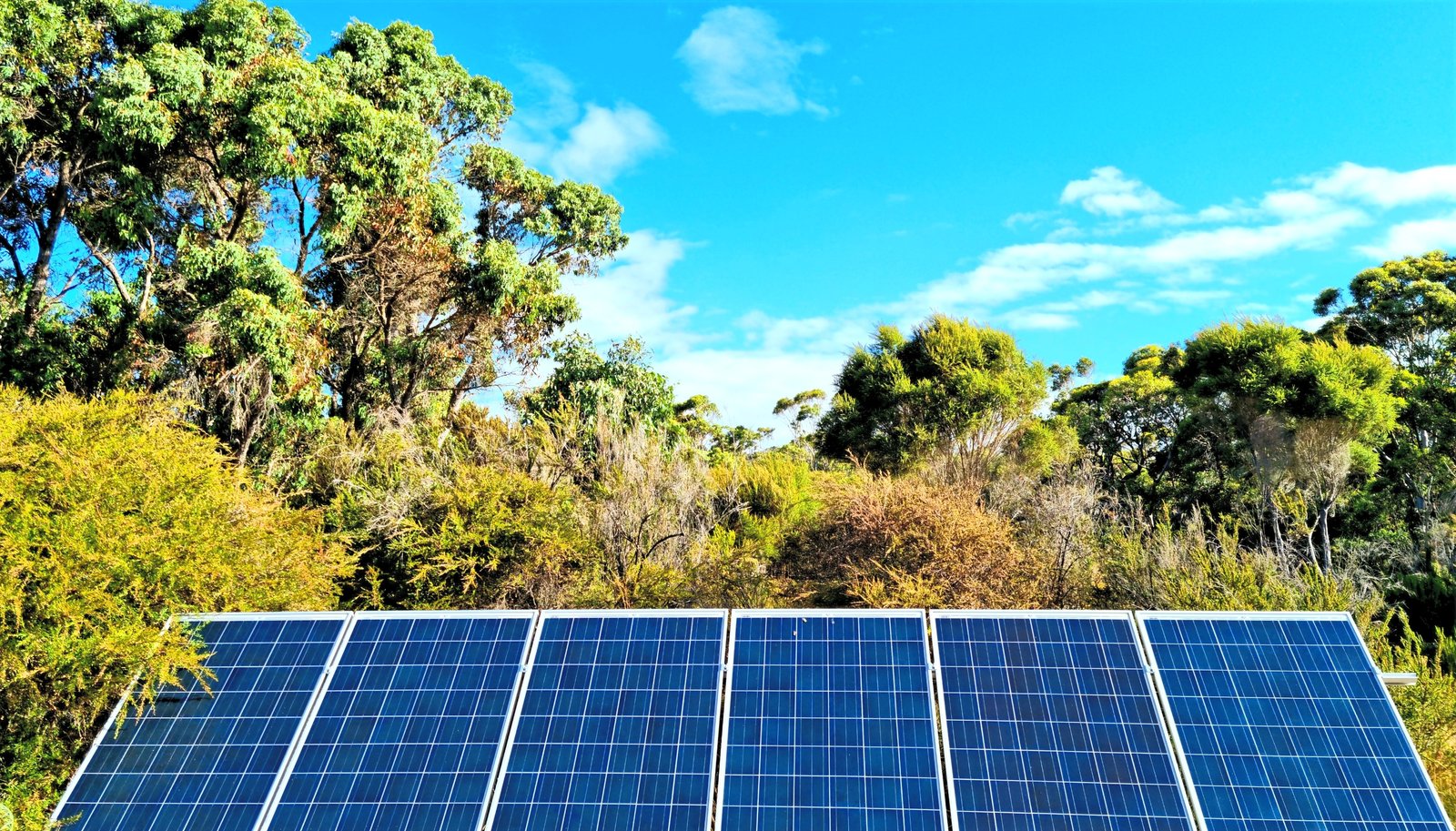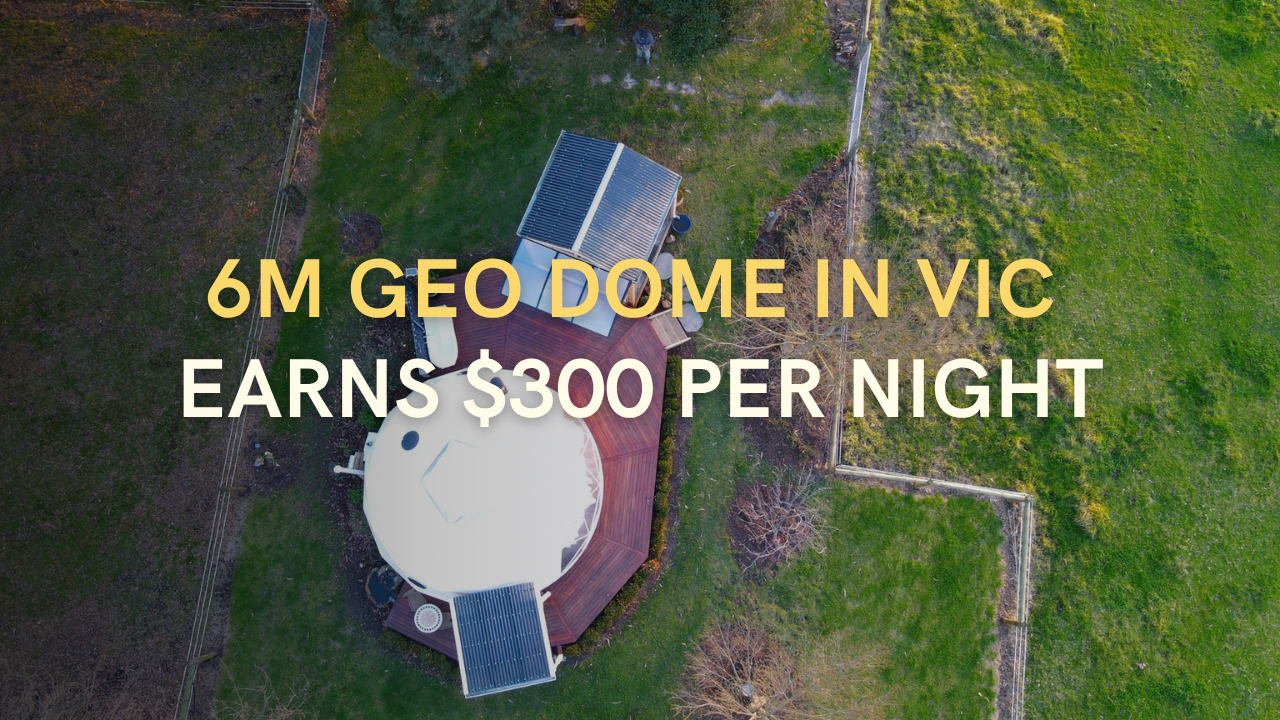Off Grid Solar Systems Australia: Yurt & Dome Guide 2026
Thinking about living in a yurt or dome, or setting one up as a retreat or studio? At some point you’ll hit the big question: “How do we actually power this thing?”
For most people in Australia, the answer ends up being some version of an off-grid solar system – panels, batteries, inverter, maybe a backup generator. It’s not magic, it’s not “free power forever”, and it definitely isn’t one-size-fits-all. But when it’s sized properly, it works well and keeps life comfortable.
This article is based on what we see again and again in real yurt and dome builds across Australia and NZ. Use it as a starting point for your own research and planning.
Why Off-Grid Solar Works Well for Yurts & Domes
Yurts and domes are usually out on acreage, bush blocks, farms or coastal properties – places where running grid power can be eye-wateringly expensive or simply not an option. In that context, a decent off-grid system makes a lot of sense:
- Energy independence (with limits): If there’s a blackout in town, you probably won’t notice.
- No ongoing power bills: You’re trading monthly bills for a one-off setup cost.
- Perfect for remote blocks: Off-grid solar is often cheaper than paying tens of thousands for poles and wires.
- Cleaner than running a generator full-time: A small generator is still handy for bad weather but rarely needed.
Big reality check: off-grid isn’t the same as a suburban connection. High-draw appliances (electric ovens, ducted AC, electric hot water, dryers) need planning or alternatives.
Off-Grid Solar Systems: The Basics
An off-grid solar system is basically a small, private power station for your yurt or dome. It usually includes:
- Solar panels
- Batteries
- An inverter
- A charge controller
- Wiring, fuses, breakers and mounts
Solar Panels
Panels turn sunlight into DC electricity. For most setups, monocrystalline panels are the go-to: efficient, widely available and compact.
Batteries
Most off-grid systems now use LiFePO4 lithium batteries. They’re long-lasting, stable and low-maintenance.
You’re mostly deciding how much storage you want and how many days of bad weather you want to ride out.
Inverters
A pure sine wave inverter is ideal – clean, quiet power that works with modern appliances. Many systems use hybrid inverters so a generator can top things up when needed.
Other Gear
- MPPT charge controller: Maximises energy harvest.
- Safe wiring & protection: Whether DIY or not, this needs to be done properly.
- Mounting hardware: Especially important in windy regions.
How Big a System Do You Actually Need?
The only honest way is to list your appliances, estimate run time, and tally up your daily kWh use. Here’s a realistic example for a couple in an 8m dome:
| Appliance | Wattage | Hours of Use | Daily Watt-Hours |
|---|---|---|---|
| LED Lights (x8) | 8W | 4 | 256 |
| Efficient Fridge | 100W avg | 8 | 800 |
| Laptop (x2) | 60W | 4 | 480 |
| Phones (x2) | 10W | 3 | 60 |
| TV | 80W | 2 | 160 |
| Water Pump | 500W | 0.3 | 150 |
| Total | ≈1.9 kWh/day |
Add some buffer and you’re at ~2.4 kWh/day. Plenty of families live comfortably on systems in this range.
Recommended System Sizes for Yurts & Domes
| Scenario | Daily Energy Use | Recommended System Size | Estimated Daily Production |
|---|---|---|---|
| Weekend Retreat | 0.5–1.5 kWh | 0.6–1.2kW solar, 3–5kWh battery | 2–5 kWh |
| Part-Time Living | 1.5–3 kWh | 1–2kW solar, 5–8kWh battery | 4–8 kWh |
| Full-Time Couple | 2–4 kWh | 1.5–3kW solar, 7–12kWh battery | 6–12 kWh |
| Full-Time Family | 3–6 kWh | 2–3kW solar, 8–14kWh battery | 8–14 kWh |
Off-Grid Solar Costs in Australia (2026)
DIY vs Done-For-You
| Scenario | DIY / Semi-DIY Hardware | Done-For-You Installed |
|---|---|---|
| Weekend Retreat | $1,500 – $3,000 | $3,500 – $7,000+ |
| Part-Time Living | $2,000 – $4,500 | $5,000 – $10,000+ |
| Full-Time Couple | $3,000 – $6,000 | $7,000 – $15,000+ |
| Full-Time Family | $4,000 – $8,000 | $10,000 – $20,000+ |
DIY/semi-DIY numbers assume you’re comfortable doing the research and the physical work. Done-for-you covers people who want a packaged system with minimal hands-on time.
DIY vs Professional Install
Most yurt and dome owners use a hybrid approach:
- Research the system themselves
- Source components
- Mount panels, run conduit, build frames
- Get a sparky for final 240V sign-off
Others prefer a turnkey install. Both approaches work — what matters is that it’s safe, tidy and makes sense for your lifestyle.
Real-World Example: 8m Yurt Setup
- System: ~2.5–3kW solar + 8–12kWh lithium battery
- Use Case: Lights, fridge, laptops, water pump, devices, TV, occasional tools
- Budget: ~$4,000–$6,000 DIY-style
This size of system is what a surprising number of families actually run successfully for years.
Common Off-Grid Challenges
- Cloudy streaks: Usually solved with a backup generator.
- Power awareness: Running big loads when the sun’s out makes a huge difference.
- Under-sizing: Better to size it right upfront than wish you did later.
Maintenance & Long-Term Thinking
- Monthly: Quick visual check of system status.
- Every few months: Clean panels.
- Annually: Basic system checkup.
Solar panels can last decades. Inverters and batteries will eventually need replacement, but good gear lasts a long time.
FAQ
Q: Can I run air conditioning?
A: Yes, but efficient split systems and good planning help. Best run during sunny hours.
Q: Can I use normal household appliances?
A: Yes. Just be mindful of total load. Many off-grid homes combine gas/wood for big-draw items.
Q: How long do systems last?
A: Panels can last 20–30 years. Inverters and batteries often 10–15 with good care.
Q: Do you sell solar systems?
A: No — but we can help you sense-check ideas based on what we’ve seen work for other off-grid builds.
Planning a Yurt or Dome and Sorting Out Power?
If you’re mapping out a build and trying to wrap your head around off-grid power, we can help you think through the practical side.
We don’t sell solar systems, but we’ve seen hundreds of setups and can help point you in the right direction.
Phone: +61 489 269 088
Email: hello@yurtinthedirt.com.au
Further Reading
Bureau of Meteorology – Climate Data
This article is general info only, based on real off-grid setups we see around yurts, domes and tiny spaces.












